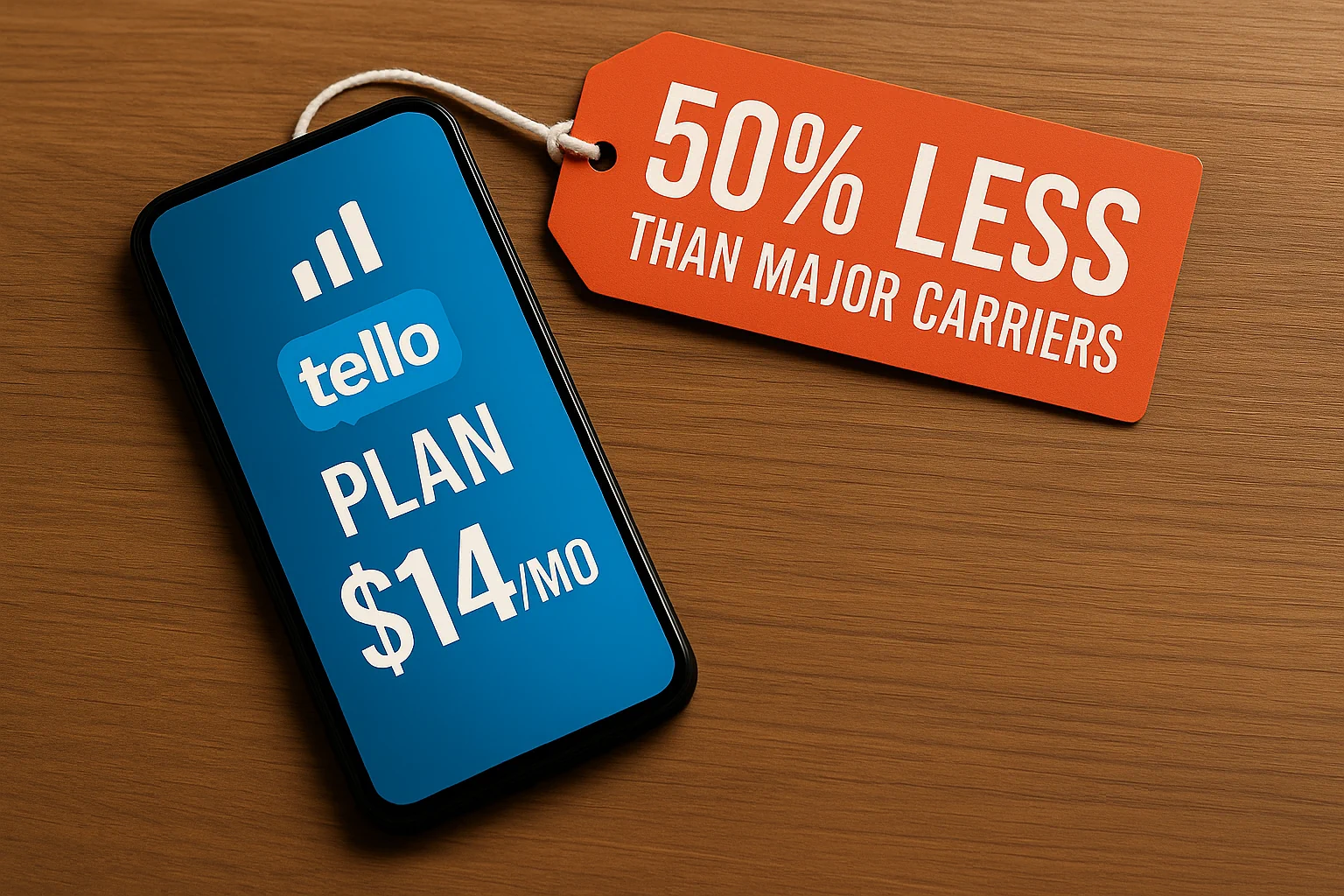If you’ve ever shopped for a phone plan, you’ve probably noticed that MVNOs (Mobile Virtual Network Operators) often advertise plans that are dramatically cheaper than what you’d find directly from the Big Three wireless carriers: AT&T, T-Mobile, and Verizon.
So what’s the catch? And how are these providers able to offer such low prices without going out of business?
It all comes down to business structure, network access, and some trade-offs. Let’s examine.
1. MVNOs Don’t Own Their Own Networks
The most obvious reason MVNOs can offer cheaper plans is that they don’t operate any cell towers or physical network infrastructure. Instead, they lease access from one or more of the major carriers.
That means:
- No billion-dollar investments in 5G network rollouts
- No costly tower maintenance
- No spectrum licensing costs
Since MVNOs operate purely as resellers, they avoid the massive capital expenditures that carriers like Verizon or AT&T incur. That savings can be passed on to you.
2. No Roaming Agreements = Lower Cost (But Sometimes Less Coverage)
One behind-the-scenes expense that major carriers incur is domestic roaming. For example, if T-Mobile or AT&T customers lose native signal in certain rural areas, they often roam on another carrier’s towers, at a cost to the carrier.
MVNOs typically don’t have access to these roaming agreements. That means:
- MVNOs save money by avoiding expensive roaming fees
- You might get less coverage in fringe or rural areas
Some premium MVNOs may offer limited roaming, but it’s the exception, not the rule. This is one way MVNOs keep their operating costs, and your monthly bill lower.
3. No Storefronts = Lower Overhead
Unlike big carriers, most MVNOs are digital-first or online-only operations. They avoid:
- Leasing and staffing physical retail stores
- In-store support teams and logistics
This gives them a lean business model, focused on direct-to-consumer distribution via websites, apps, or independent dealers. Those that do have stores, like Consumer Cellular for instance, tend to sell plans at higher price points.
4. Lean Customer Service Operations
Customer support is one of the most expensive parts of running a telecom business. Most MVNOs keep costs down by:
- Offering limited support hours
- Relying heavily on email, chat support, and A.I., instead of phone calls
- Outsourcing support overseas
This minimalist approach helps reduce overhead, but can lead to:
- Frustration if support is needed urgently, or is not very good
- Fewer resolution channels (e.g., no in-person service)
That said, not all MVNOs cut corners. Consumer Cellular, for example, consistently scores high in JD Power customer satisfaction surveys thanks to its U.S.-based call centers and senior-friendly service.
5. Lower Data Priority During Congestion
This is one of the biggest hidden cost-saving mechanisms:
MVNOs typically receive lower network priority compared to customers on the parent carrier’s direct plans. This means:
- When the network is congested, MVNO data speeds can slow down significantly compared to other customers on the main network
- In extreme cases, data can become nearly unusable (e.g., at crowded events or rush hours)
This trade-off allows the carriers to offer MVNOs cheaper wholesale access, which translates to lower prices for you but sometimes at the cost of reliability. Of course, some MVNOs do offer phone plans with priority data. Some examples include US Mobile, MobileX, and Google Fi.
6. Simpler Plans and Fewer Perks
MVNOs generally offer:
- Fewer bundled services (e.g., no free Netflix or cloud storage)
- Simpler plan structures
- Less flexibility in multi-line discounts
These limitations can reduce the MVNO’s operational complexity which, again, saves money.
Are MVNOs Right for You?
MVNOs are generally cheaper because because most are built to be lean, efficient, and no-frills. By skipping the big network expenses, expensive perks, and store-heavy support models, they’re able to offer extremely competitive prices.
For budget-conscious users, MVNOs can be an excellent choice, as long as you’re aware of the limitations. Some even serve specific market segments that big wireless carriers often overlook. And if you’re not happy with one switching is easy and generally takes just a few minutes.
